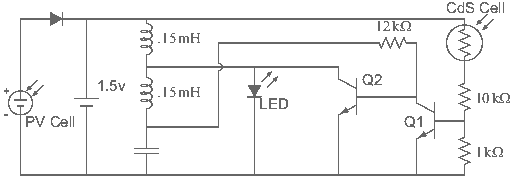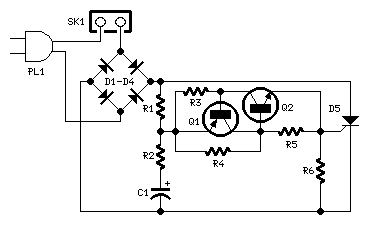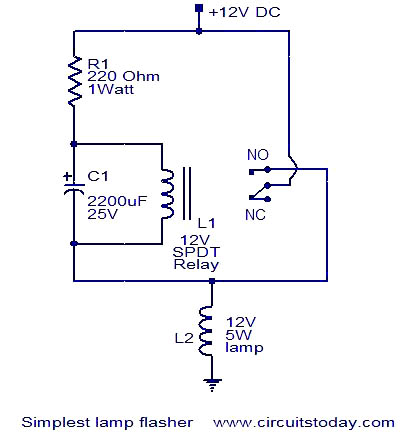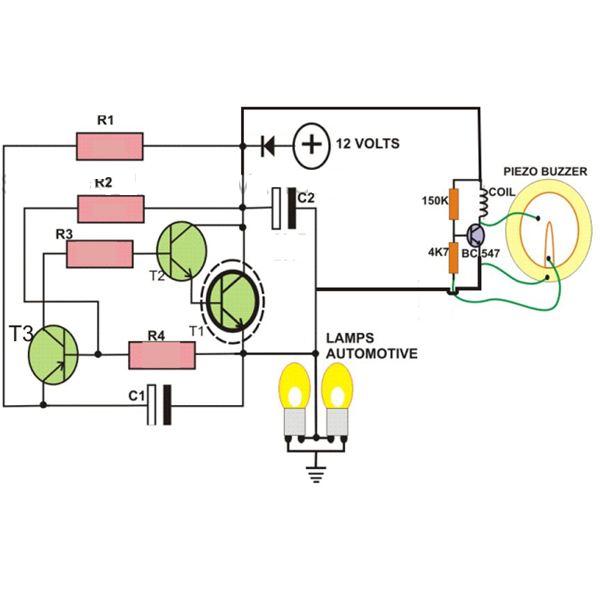
solar flasher
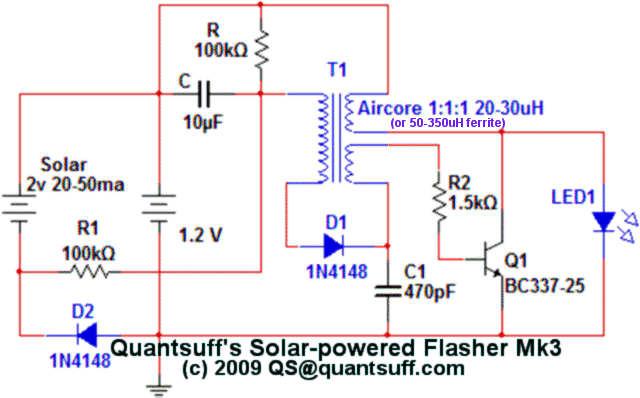
This circuit is a single transistor flyback (Joule Thief) circuit that features a third coil. With it, flash duration and brightness are significantly enhanced, without the need for large value capacitors.
The described circuit operates as a Joule Thief, a type of boost converter that utilizes a single transistor to extract energy from a low-voltage power source, such as a depleted battery. The addition of a third coil to the circuit enhances its functionality by allowing for greater energy storage and improved output characteristics.
In this configuration, the primary coil is responsible for initiating magnetic flux when a voltage is applied to the base of the transistor, turning it on. As the transistor conducts, current flows through the primary coil, creating a magnetic field. When the transistor turns off, the collapsing magnetic field induces a voltage in the secondary coil, which can be used to power a load. The introduction of the third coil serves to capture and store more energy during the flyback period, effectively increasing the duration and intensity of the output flash.
The circuit can be constructed using minimal components: a transistor (commonly an NPN type), resistors for biasing, and the three coils (primary, secondary, and the additional coil). The absence of large capacitors simplifies the design and reduces the overall size and cost of the circuit while still achieving high efficiency and enhanced performance.
This configuration is particularly useful in applications requiring brief but intense bursts of light, such as in flashlights or camera flashes, where the increased brightness and duration are crucial. The careful selection of coil windings and the number of turns can further optimize the circuit's performance, allowing for fine-tuning based on specific application needs.This circuit is a single transistor flyback (Joule Thief) circuit that features a third coil. With it, flash duration and brightness is much enhanced, without resorting to large value capacitors. 🔗 External reference
The described circuit operates as a Joule Thief, a type of boost converter that utilizes a single transistor to extract energy from a low-voltage power source, such as a depleted battery. The addition of a third coil to the circuit enhances its functionality by allowing for greater energy storage and improved output characteristics.
In this configuration, the primary coil is responsible for initiating magnetic flux when a voltage is applied to the base of the transistor, turning it on. As the transistor conducts, current flows through the primary coil, creating a magnetic field. When the transistor turns off, the collapsing magnetic field induces a voltage in the secondary coil, which can be used to power a load. The introduction of the third coil serves to capture and store more energy during the flyback period, effectively increasing the duration and intensity of the output flash.
The circuit can be constructed using minimal components: a transistor (commonly an NPN type), resistors for biasing, and the three coils (primary, secondary, and the additional coil). The absence of large capacitors simplifies the design and reduces the overall size and cost of the circuit while still achieving high efficiency and enhanced performance.
This configuration is particularly useful in applications requiring brief but intense bursts of light, such as in flashlights or camera flashes, where the increased brightness and duration are crucial. The careful selection of coil windings and the number of turns can further optimize the circuit's performance, allowing for fine-tuning based on specific application needs.This circuit is a single transistor flyback (Joule Thief) circuit that features a third coil. With it, flash duration and brightness is much enhanced, without resorting to large value capacitors. 🔗 External reference


